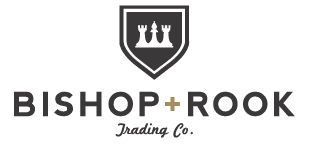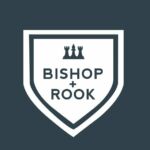The journey of closing down our UK workshop has been fraught with numerous challenges and complications, particularly involving Maxwell Davies and Ruth Duncan. As we endeavored to protect our US customer projects and manage the liquidation process, we faced a myriad of obstacles that not only hindered our progress but also posed significant threats to our customers’ investments and our company’s reputation.
This blog post aims to provide clarity and transparency for those interested in the behind-the-scenes events leading to the closure of Bishop+Rook UK Ltd. (BRUK). The journey of shutting down the UK workshop was marred by numerous challenges and complications, particularly involving key figures like Maxwell Davies and Ruth Duncan. As the company navigated the complexities of liquidation, it faced significant obstacles that not only hampered progress but also posed serious risks to customer investments and the company’s reputation. We are relaying this information as accurate, to the best of our ability. Further investigations are underway.
Executive Summary
The liquidation process in the UK for Bishop+Rook UK Ltd. has been marred by numerous issues, including mismanagement and a lack of transparency. Despite clear evidence that the assets, particularly newly painted panels and complete vehicle components, belonged to US customers, the liquidator, Ruth Duncan, along with Andrew Fox, proceeded to sell off these assets. Customers were required to provide extensive documentation to prove ownership, which was often dismissed with the assertion that “photos are not proof of ownership.” This mismanagement led to the unauthorized sale of critical parts and entire vehicles, disregarding the interests of the rightful owners and resulting in significant financial and emotional distress for the customers involved. The process has been further complicated by conflicting interests and alleged misconduct, making it challenging to protect customer assets and seek a fair resolution.
The Genesis of the Crisis
Our troubles began with the operational and financial difficulties faced by Bishop+Rook UK Ltd. (BRUK), the UK operations of Bishop+Rook LLC. Established in November 2020, BRUK aimed to purchase, restore, and export vintage Land Rover Defenders. However, the operation struggled from the outset due to a combination of factors, including operational inefficiencies, high staff turnover, and questionable management practices by Andrew Fox, a former director of the company.
By early 2024, it became clear that the financial burdens were insurmountable. The workshop had accumulated significant liabilities, primarily due to UK mismanagement and the failure to complete restoration projects on time and within budget.
Entering Liquidation and the Role of Ruth Duncan
Faced with these challenges, we made the difficult decision to enter Creditors Voluntary Liquidation. Initially, we engaged Ruth Duncan of Maxwell Davies to oversee the process, believing she would help us navigate the complexities of liquidating the company in the UK while preserving customer assets. However, this relationship quickly deteriorated as Duncan’s actions seemed to prioritize liquidating assets over protecting customer interests.
Below is a gallery of the UK workshop when we moved in.
Complications and Alleged Misdealings
The liquidation process became further complicated by the involvement of Andrew Fox, who had started several competing companies using Bishop+Rook resources. It was alleged that Fox, alongside Duncan, facilitated the sale of critical parts and components that were meant for US customer projects. These actions not only undermined our efforts to protect customer investments but also cast a shadow over the integrity of the liquidation process.
In several instances, Duncan’s representatives removed parts from the workshop and sold them off without prior notice, despite our repeated assertions of customer ownership. This included vital components that were crucial to the completion of the projects. These actions led to significant losses for our customers, who had already invested substantial amounts in their restoration projects.
For those with experience with Defender restoration, the process should not come as a surprise. A donor vehicle is secured, disassembled, parts restored, new parts acquired, and then ultimately put back together. It was the position of the liquidator, helped by Mr. Fox, that all the parts were taken off, purchased new (even painted and ready to be reassembled), and somehow belonged to the UK company and not the US stakeholders. This gallery below is an example of all the parts taken and sold off (without payment to customers, creditors, or stakeholders).
We informed Ms. Duncan several times that all of these take-off parts belonged to US customers and were critical to the restoration. She ignored these statements and instead sold the assets off to Tom Haynes – as seen in his Facebook posts. Despite us showing her these photos, she denied these assets were sold off. Full chassis, which belonged to US customers, were also sold off. Ms. Duncan restricted our access to the workshop until her agents could sneak in and take these parts.
Case Examples
Throughout the liquidation process, there were numerous instances where the liquidator, Ruth Duncan, with the assistance of Mr. Andrew Fox, converted assets belonging to US customers for their own self-interest and gain. Despite the clear designation of these assets as part of customer projects, Duncan and Fox facilitated the sale of critical components, often without proper verification of ownership. When these sales were challenged, customers were required to submit extensive documentation and proof that the parts in question were indeed theirs. However, even with thorough documentation, including time-stamped photos and detailed records of restoration progress, Duncan dismissed these proofs, infamously stating, “photos are not proof of ownership.”
There were multiple cases where complete vehicles, along with all associated parts and panels, were sold off, disregarding their customer-specific designations. In many instances, newly painted panels, carefully documented as integral to specific restoration projects, were liquidated. Despite our efforts to present clear evidence of customer ownership, these items were sold, and customers were unjustly deprived of their property. Such actions by Duncan and Fox were not only unethical but also blatantly disregarded the rightful claims of the US customers, further complicating an already contentious liquidation process.

This is for Project Clint. This is the photo of the vehicle we were able to recover from the workshop. All 5 doors had been removed and sold off. All seats and interior panels were also sold off.

This is the photo of Project Clint just days before we filed for liquidation, clearly showing all the doors, including various spare parts and pieces associated with the vehicle. Somehow, Ms. Duncan was only able to return 2 doors, claiming that the other doors did not belong to the client.
The below gallery shows Project Big Boy, which is a custom Defender 130, including a tub, roof, doors, panels, engine, wheels, axles, etc, that had been sold off. Mr. Duncan stated that photos were not proof of ownership and that the assets sold off did not belong to the customer. Despite us having detailed time tracking reports, images, videos, and WhatsApp messages, specifically identifying the project and parts.
Project Guinevere was particularly troubling, as this project was 95% complete at the time of liquidation. All that needed to be done was install the doors that were sitting next to the vehicle. Despite the obvious proof, Ruth Duncan made the client jump through hoops for 2 months before he finally got his doors back.

We had extensive proof that these doors belonged to the project, but Ms. Duncan’s position was that there was no way to prove that those blue doors, sitting next to the blue truck, with time tracking and invoices showing that these doors belonged to the project.
Project Arnold had recently had all the body panels painted by a third party, after Andrew Fox sold off our in-house paint booth. We questioned Ms. Duncan about the location of these assets and her only response was that photos were not proof of ownership.

All of these panels were sold to a third party despite our providing explicit details that they belonged to the client.
Efforts to Protect US Customer Projects
Throughout this ordeal, our primary concern was to safeguard the interests of our US customers. Despite the financial and legal constraints, we continued to advocate for the return of customer-owned parts and sought to navigate the challenging UK liquidation laws. Our efforts included negotiating with Duncan and her team, attempting to retrieve parts before they were sold off, and providing customers with all necessary documentation to assert their ownership rights.
Unfortunately, despite these efforts, the process was marred by delays, lack of transparency, and a general disregard for the customer projects’ integrity. Customers were often left in the dark, uncertain about the fate of their vehicles and the components they had paid for. The situation was further exacerbated by claims of work liens and parts liens imposed by Duncan, which we believe lacked legal basis.
We had the opportunity to work directly with several US customers who, like us, were forced to navigate the complexities of dealing with Ruth Duncan. Their accounts echoed our own experiences: they reported encountering outlandish claims, a disturbing level of secrecy, and positions taken by Ms. Duncan that were not supported by UK law. These customers found themselves entangled in a process that seemed more intent on obfuscating the truth and asserting baseless claims than on seeking a fair and just resolution. The lack of transparency and the questionable legal positions adopted by Ms. Duncan only served to exacerbate the frustration and confusion faced by those who were already suffering from the company’s unfortunate collapse.
Timeline of Events: BRUK Workshop Closure and Liquidation Process
2020
- November 2: Bishop+Rook UK Ltd. (BRUK) is established following the acquisition of DNA Autocentre/Blacksmoke Ltd. The UK entity is created to purchase, restore, and export vintage Land Rover Defenders to the US and other markets.
2021 – 2022
- Ongoing Operations: The company begins its operations, focusing on sourcing and restoring Land Rover Defenders for US customers.
2023
- Operational Challenges: The company faces significant challenges, including operational inefficiencies, high staff turnover, and management issues, leading to only four partial restorations completed instead of the projected 12.
- May: Tom Morris resigns from his position, transferring his shares to Andrew Fox.
- May: Andrew Fox secretly starts Artisan Motor Co – a competing restoration company.
- Fall 2023: Workshop is moved from Cholderton Estate to Kimpton Estate by the advice of Andrew Fox, stating that our rent and business rates would be increasing.
- October: Bishop+Rook UK Ltd. moves into new Kimpton workshop, while Andrew Fox secretely moved his Artisan Motor Co. company into the Cholderton Estate. Andrew spends most of his time working on his own business, despite drawing a salary from Bishop+Rook and while still responsible for UK operations.
- Late 2023: Extensive turn-around plan put in place, with support from the US LLC.
2024
- Early 2024: Financial instability becomes insurmountable, with BRUK unable to manage its debts and operational delays.
- Early 2024: Allegations arise against Andrew Fox, who is suspected of starting a competing company using Bishop+Rook resources and misappropriating company assets.
- February 2024: Andrew Fox starts another restoration company, Coachman Defenders, while serving as a Director of Bishop+Rook UK Ltd. Facebook Link. Website.
- March 8: A video is recorded documenting the state of the workshop and associated parts, providing evidence of customer ownership of the parts.
- March 14-15: The company ceases operations, and the decision is made to enter Creditors Voluntary Liquidation.
- April: The liquidation process officially begins, with Ruth Duncan of Maxwell Davies appointed as the liquidator. Initial discussions suggest a cooperative relationship to protect customer assets.
- May 11: Andrew Fox forms yet another new company, Offgrid Moto Limited, raising suspicions of further self-dealing.
- June: Reports emerge of parts being sold off without notice, including by agents acting on behalf of Maxwell Davies and Ruth Duncan, despite assertions of customer ownership.
- June 28: A formal update on the liquidation process is provided, highlighting the challenges faced and ongoing efforts to protect customer interests.
- July 11: A reflective letter is released to US customers, detailing the difficulties encountered and lessons learned during the process.
Ongoing
- Customer Advocacy: Efforts continue to assist US customers in recovering their investments and ensuring the protection of their projects, amidst a contentious and challenging liquidation process.
This timeline captures the critical events and turning points during the establishment, operational phase, and eventual liquidation of Bishop+Rook UK Ltd., highlighting the challenges faced and the steps taken to navigate them.
Moving Forward: Lessons and Reflections
As we reflect on these challenging times, it’s clear that the situation was a confluence of poor management, misaligned interests, and legal complexities. The experience has been a profound learning journey, underscoring the importance of having trustworthy partners and a transparent operational framework. While the actions of a few individuals have caused considerable harm, we remain committed to supporting our customers and rectifying the situation as best as we can.
Moving forward, we are focused on assisting our customers in recovering their investments and ensuring that their projects can be completed. This includes providing all necessary support and documentation to help them navigate the legal landscape and reclaim their rightful property.
The journey with Maxwell Davies, Ruth Duncan, and Andrew Fox has been a cautionary tale of the pitfalls that can arise during a liquidation process. It serves as a reminder of the critical need for transparency, integrity, and a steadfast commitment to customer interests, especially in challenging times. We remain hopeful that, with time and continued effort, we can bring some resolution and closure to the affected parties.
Letters and Resources:
Here are a variety of communications between Ms. Duncan, her solicitors, and related parties:
March 2024 Statement of Affairs (SIP):
SIP6 report-final
After not getting a response from Ruth regarding our ability to recover US customer assets, we hired a UK solicitor to send this letter:
May 2nd, 2024
Letter to Bishop Rook UK Ltd on 02 05 24 (as sent)_THL_166637122_1
The response from Ruth Duncan’s Solicitors:
May 17nd, 2024
Letter from Lupton Fawcett 17_05_2024_THL_166910804_1
After further delays, we sent an email demanding access, but also highlighting reports that Andrew Fox has been taking US customer parts from the workshop:
May 30th, 2024
Letter to Trowers Hamlins LLP 30.05.2024 (003)
June 24th, 2024 – Demand Letter from the LLC
BRUK – FINAL DEMAND FOR RESOLUTION – 06252024-1
July 1st, 2024 – Proof of Ownership Letter
This letter was sent to Ruth Duncan and Andrew Fox to clarify ownership. Andrew Fox refused to sign.
BRUK – PROOF OF CREDITOR OWNERSHIP – 07012024
Insolvency Practitioner Complaint UK
Insolvency Practitioner Complaint
Letter sent to US Customers by Ms. Duncan forcing them to prove ownership:
Vehicle Information Sheet
Letter from Ruth Duncan denying all claims:
Letter to Mr M Kraabel.26.07.24.L
Complaint about Andrew Fox:
ANDREW FOX – LETTER-2






















































































































You must be logged in to post a comment.